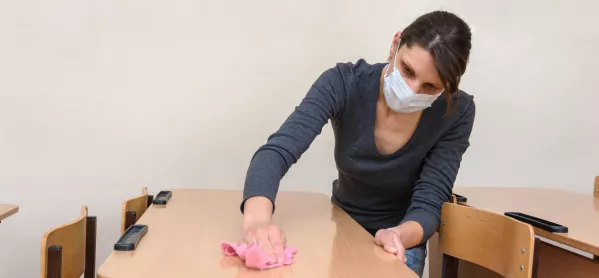There is a “real risk” that coronavirus cases will rise “sharply” once secondary schools return for the autumn term, a senior epidemiologist has warned.
Professor Neil Ferguson, whose modelling led the government to first impose the lockdown, also suggested that secondary pupils may need to return on a “week on, week off” basis, to avoid a rise in the rate of transmission.
But Prof Ferguson, whose advice continues to inform the government’s response despite his resignation from the Sage advisory group, told Radio 4‘s Today programme there was “a lot of evidence” that primary school children posed little risk of transmission.
Related: Call for ‘greater clarity’ on school reopening plans
Boris Johnson: ‘School reopening a national priority’
Nick Gibb: Science says no masks needed for teens in schools
He added: “I think the concern is with secondary schools - teenagers - and FE colleges, universities, where the evidence is still not certain but it looks like older teenagers can transmit just as well as adults.
“And so the risk then is that big schools, comprehensives, universities, FE colleges, link lots of households together, reconnect the social networks, which social distancing measures have deliberately disconnected. And that poses a real risk of amplification of transmission, of case numbers going up quite sharply.”
Asked whether it was possible to quantify that risk, he said: “In terms of the reproduction number, the R-value, I think high schools could increase it by as much as a half but as little as 0.2 or 0.3.
“But it will go up, and given that we’re at R=1 at the moment, clearly we don’t want R going up to 1.5 or so - that would lead to quite rapid growth of the epidemic.”
It was not certain that contacts would increase as a result of schools reopening, he said, particularly if social distancing is maintained in schools and if measures are imposed at school gates.
But, he said: “There will have to be some tightening up of restrictions in other areas to maintain an overall low enough level of contacts so we don’t see overall transmission increasing.”
Asked about the most effective way of doing this, he questioned “whether in high schools and FE colleges it’s necessary for children to go back 100 per cent or whether we can have other alternative means of provision - in one week, out the other week, therefore reducing contacts”.
Another option, he said, would be to “row back on the relaxing of restrictions in the rest of society to allow schools to be fully open - social venues, leisure venues, more working from home”.
He added: “That really is a policy decision, but in my view, it’s likely that some form of those measures will be necessary in order to reduce transmission.”
There needed to be a plan for if cases surge after schools are reopened. He said: “I think the Department for Education and individual schools need to have a plan in place for how they continue education at an effective level but reduce those school-based contacts, perhaps through partial attendance.”




